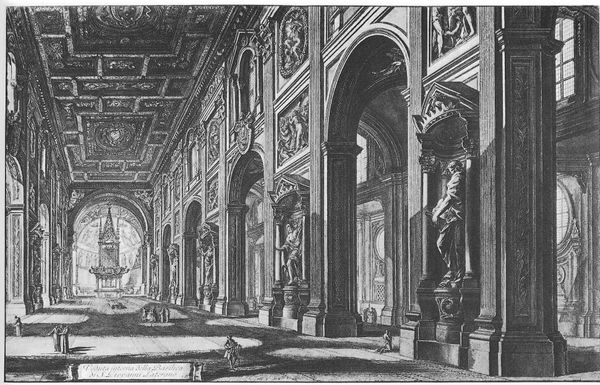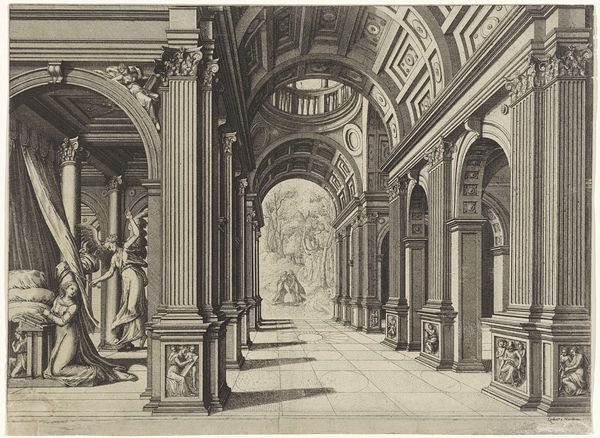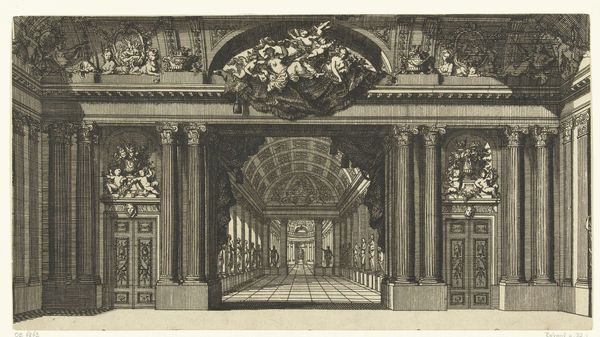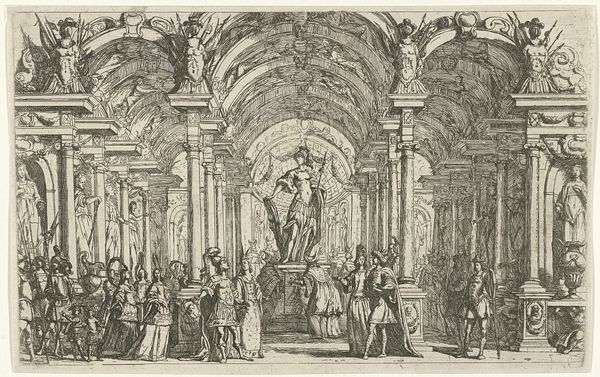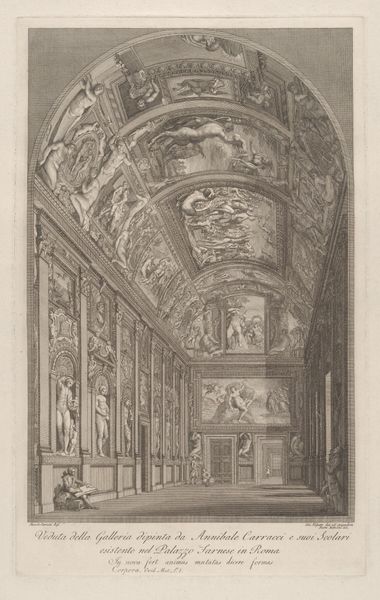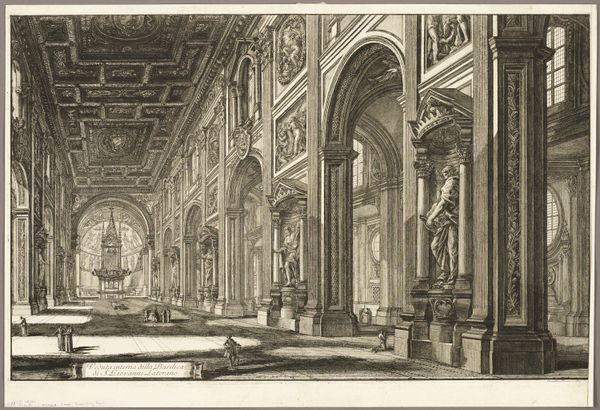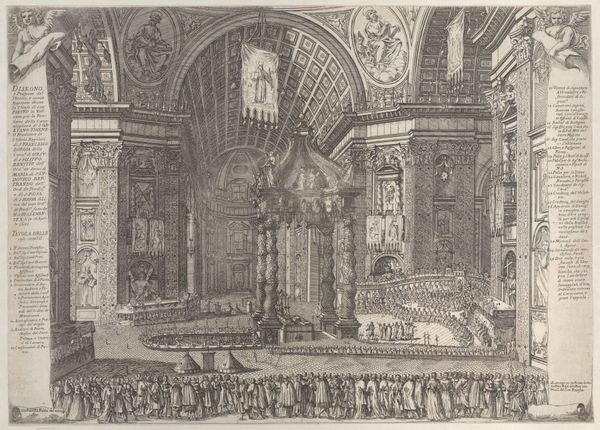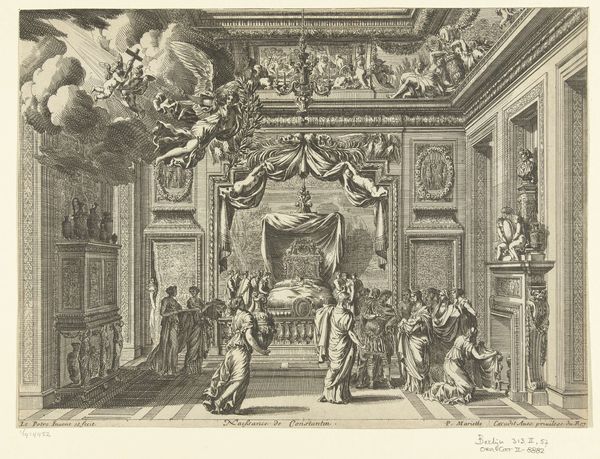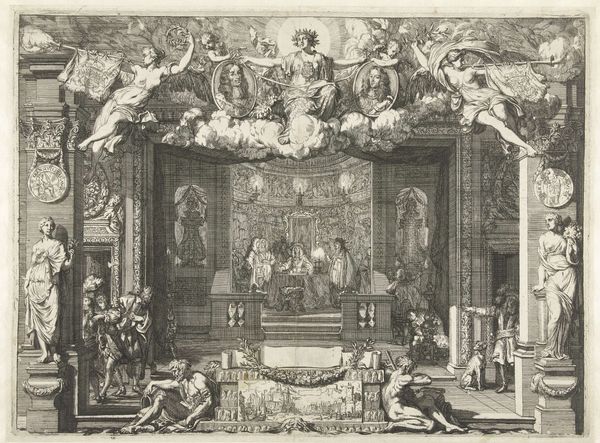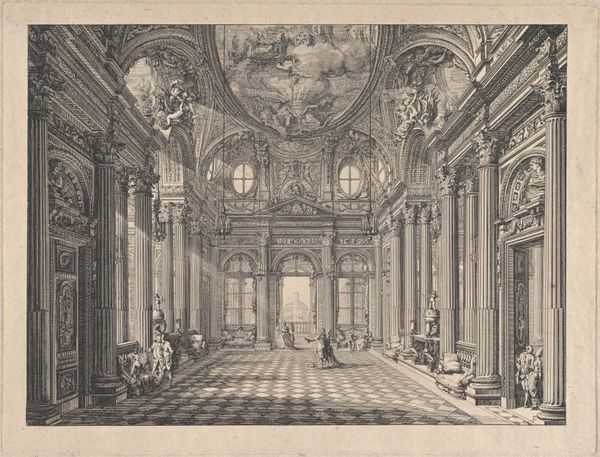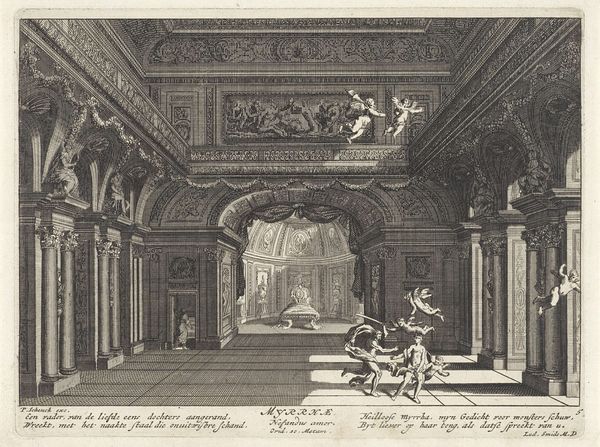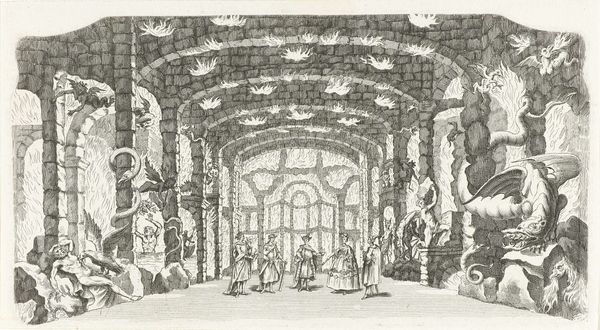
drawing, etching, ink
#
architectural sketch
#
drawing
#
mechanical pen drawing
#
pen sketch
#
etching
#
pencil sketch
#
old engraving style
#
linework heavy
#
ink
#
sketchwork
#
pen-ink sketch
#
pen work
#
cityscape
#
academic-art
#
intricate and detailed
Copyright: Public domain
Editor: This etching from 1890, titled "Armeria Reale" by Giuseppe Barberis, feels incredibly detailed. There's a sense of depth, drawing me into what looks like an armory filled with figures on horseback. What can you tell me about this piece? Curator: Indeed. It's fascinating how Barberis captures the opulence and power inherent in such a display of arms. Consider the historical context: late 19th century Europe was gripped by nationalism and anxieties about empire. How does this meticulously rendered scene of royal weaponry function within that socio-political landscape? What does it say about the construction of national identity through militaristic displays? Editor: That’s an interesting way to look at it. I was just thinking about the craftsmanship! The attention to detail is impressive. Curator: The craftsmanship is undeniable, and perhaps inseparable from the ideology it serves. The image’s very construction – the rigorous, almost obsessive rendering of detail – mirrors the project of meticulously organizing and presenting national power. How does the style itself, with its echoes of academic art, contribute to the image’s message? Does it naturalize a specific vision of history and authority? Editor: So, it's not just a picture of old weapons; it’s about the message that image sends? Curator: Precisely. Think about who had access to these displays of power and what the intended effect was. Consider Gramsci's concept of cultural hegemony: how do such displays normalize the power structures of the time? What narrative is being visually constructed? Editor: I see. So the artwork serves a purpose beyond just being aesthetically pleasing? Curator: Absolutely. Art often plays a vital role in shaping our understanding of history and power. By analyzing the artwork’s style, subject matter, and historical context, we can begin to deconstruct its underlying messages and consider its role in broader socio-political narratives. Editor: I never thought about it that way, really focusing on the cultural and political statements the art makes, it gives a new way to appreciate artworks. Curator: It is an active process, involving historical knowledge and political awareness.
Comments
No comments
Be the first to comment and join the conversation on the ultimate creative platform.
